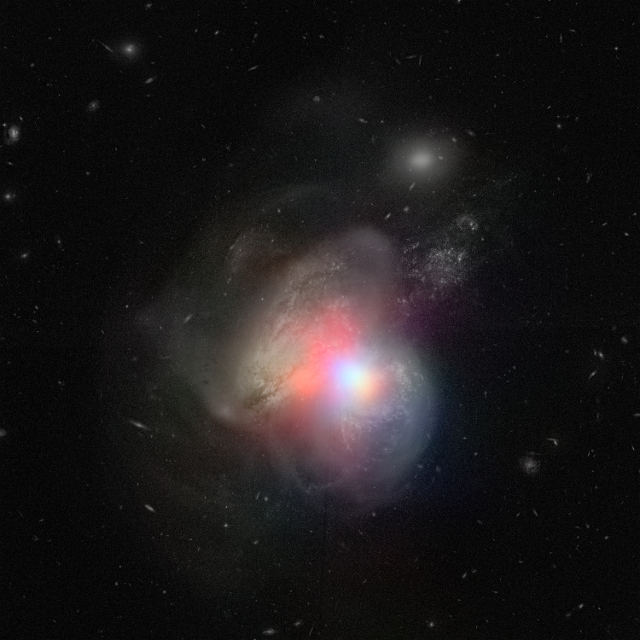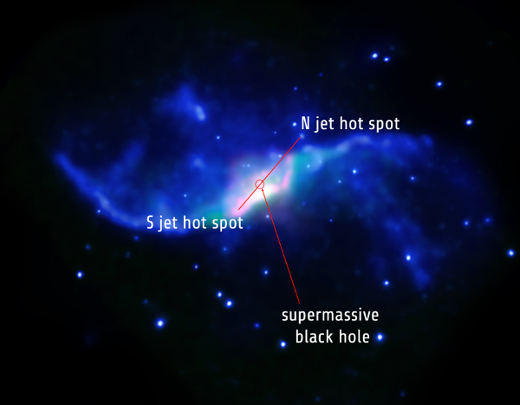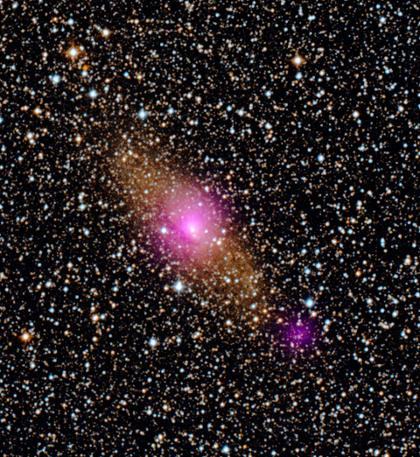
Arp 299 is a pair of galaxies (IC 694 and NGC 3690) in Ursa Major about 134 million light years from Earth. These galaxies have been interacting, that is colliding, and in the process creating a massive black hole. This composite image from NASA/JPL used data from both NuSTAR and Hubble. NuSTAR is able to capture and measure the high-energy X-rays that are being emitted by Arp 299, with the 4 to 6 kilo-electron volts appearing as red, energies of 6 to 12 kilo-electron volts being green, and 12 to 25 kilo-electron volts as blue. This is thanks to a large black hole that is consuming gases at a very high rate and releasing the X-rays being measured.

